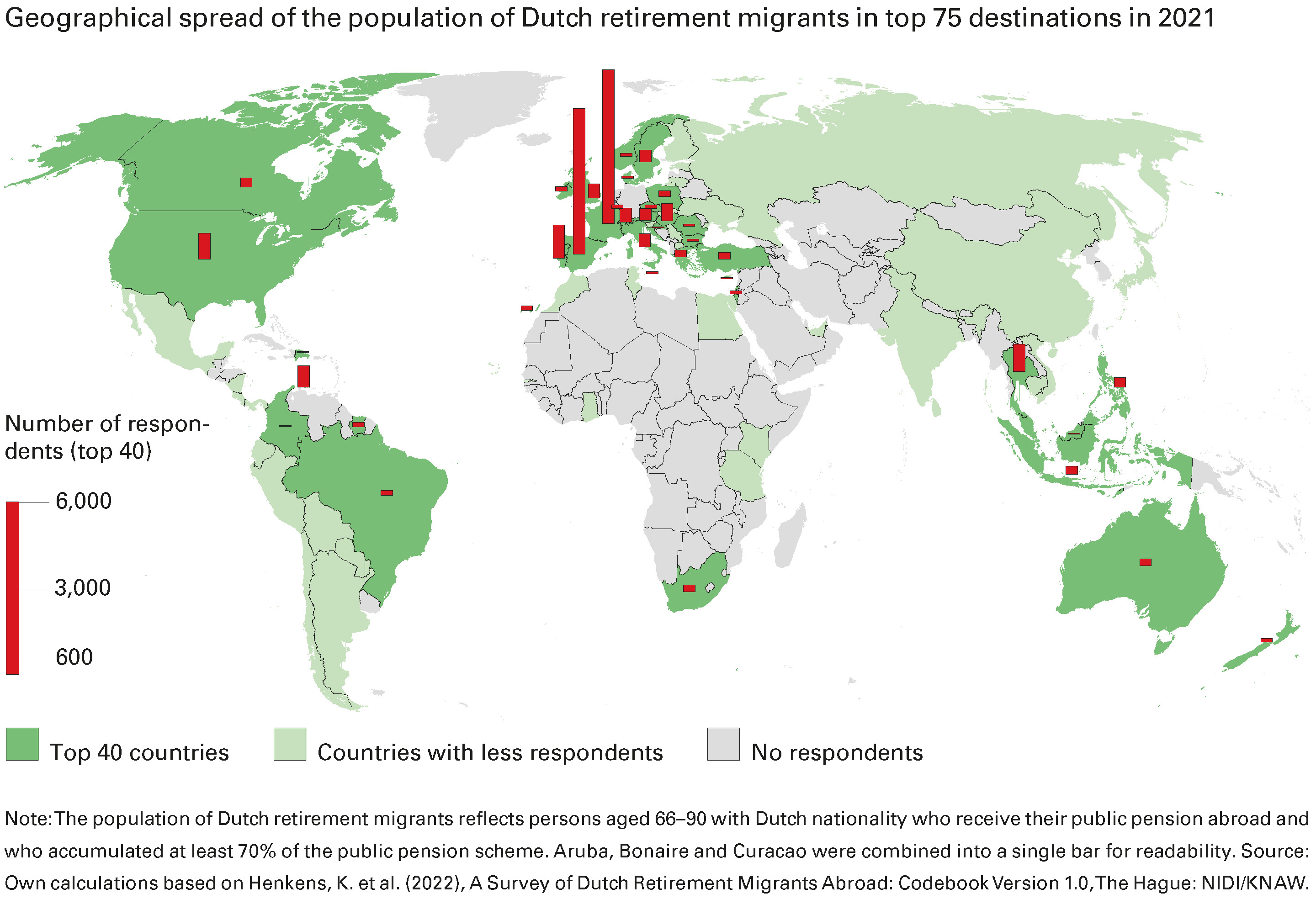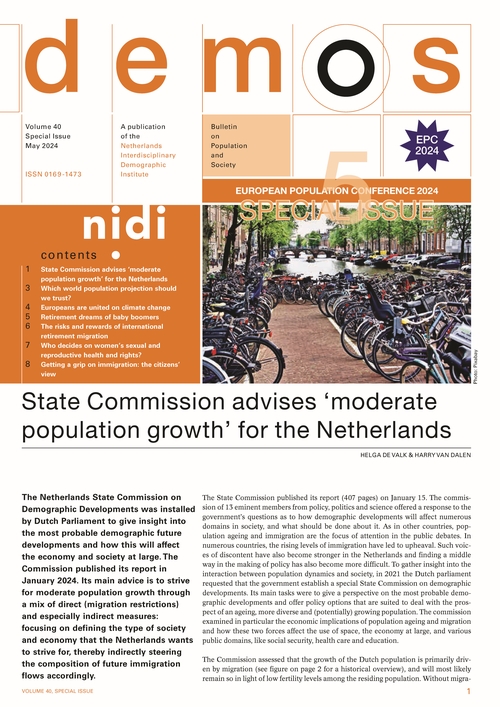Migration is a life-changing event that comes with many potential rewards, such as engaging in novel experiences. However, migrating at an older age also entails risks, because people age in a foreign country away from their support network. A rough estimate shows that there are about 24,000 Dutch individuals who migrated around the retirement age to a new country. These retirement migrants are not only located in well-known destinations in Southern Europe, but in countries all around the world (see figure below). In 2021, NIDI conducted research on a nationally representative sample of Dutch retirement migrants. Of the roughly 14,000 retirement migrants who were approached, 6,110 individuals participated in the survey of Dutch Retirement Migrants Abroad. The survey focused on retirement migrants in the forty most popular destinations.

Most retirement migrants moved when they were relatively young – between the ages of 65 and 70 – and in good health. Compared to retirees in the Netherlands who did not migrate, retirement migrants more often had a partner but had weaker ties to their family and community in the country of origin. There was much diversity in people’s motives for migration in late life, extending beyond ‘amenities’ in the destination. The most important motives were the climate, tranquility and the culture in the country of destination. Lesser-known drivers of migration, such as economic reasons, health concerns, or dissatisfaction with the home country, were not uncommon. Different motives were related to the types of people who migrate. For example, people with a lower socioeconomic status were more likely to migrate for economic reasons and dissatisfaction with the Netherlands and less likely to migrate for tranquility.
Retirement migrants move away from their social network in a life stage that is characterised by more exchanges of support, such as receiving help in day-to-day living and providing grandparental support. We examined retirement migrants’ social integration in the destination and their transnational ties with the Netherlands. The stereotype is that retirement migrants form communities with fellow migrants rather than integrating with the locals. This pattern was evident in destinations like Spain and Bonaire, where migrants had more Dutch friends than local friends. In other countries, retirement migrants socialized both with locals and fellow Dutch migrants, and less so with non-Dutch migrants. Technological advances and ease of mobility have made it easier to keep in touch over long distances. However, retirement migrants had less digital contact and face-to-face contact with their children than retirees who did not migrate. The majority was still emotionally close to their children, although emotional support alone may not be sufficient when in need of practical support. For many retirement migrants, the advantages of retirement migration seem to outweigh its disadvantages. However, a substantial minority experiences disadvantages, such as the distance from their family. The unfortunate consequences of living abroad, such as loneliness, warrant further research.
Esma Betül Savaş, NIDI-KNAW/University of Groningen, e-mail: savas@nidi.nl
Juul Spaan, NIDI-KNAW/University of Groningen, e-mail: spaan@nidi.nl
Literature
- Savaş, E.B., K. Henkens, and M. Kalmijn (2024), Who is aging out of place? The role of migrant selectivity in international retirement migration. Journal of Ethnic and Migration Studies, 50 (2), pp. 461-482.
- Spaan. J., K. Henkens, and M. Kalmijn (2023), Understanding motives for international migration: A survey of Dutch retirement migrants in forty destinations. Population, Space and Place, 29 (8), pp. e2691.


